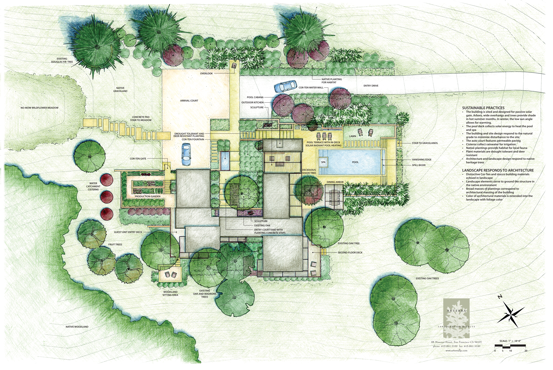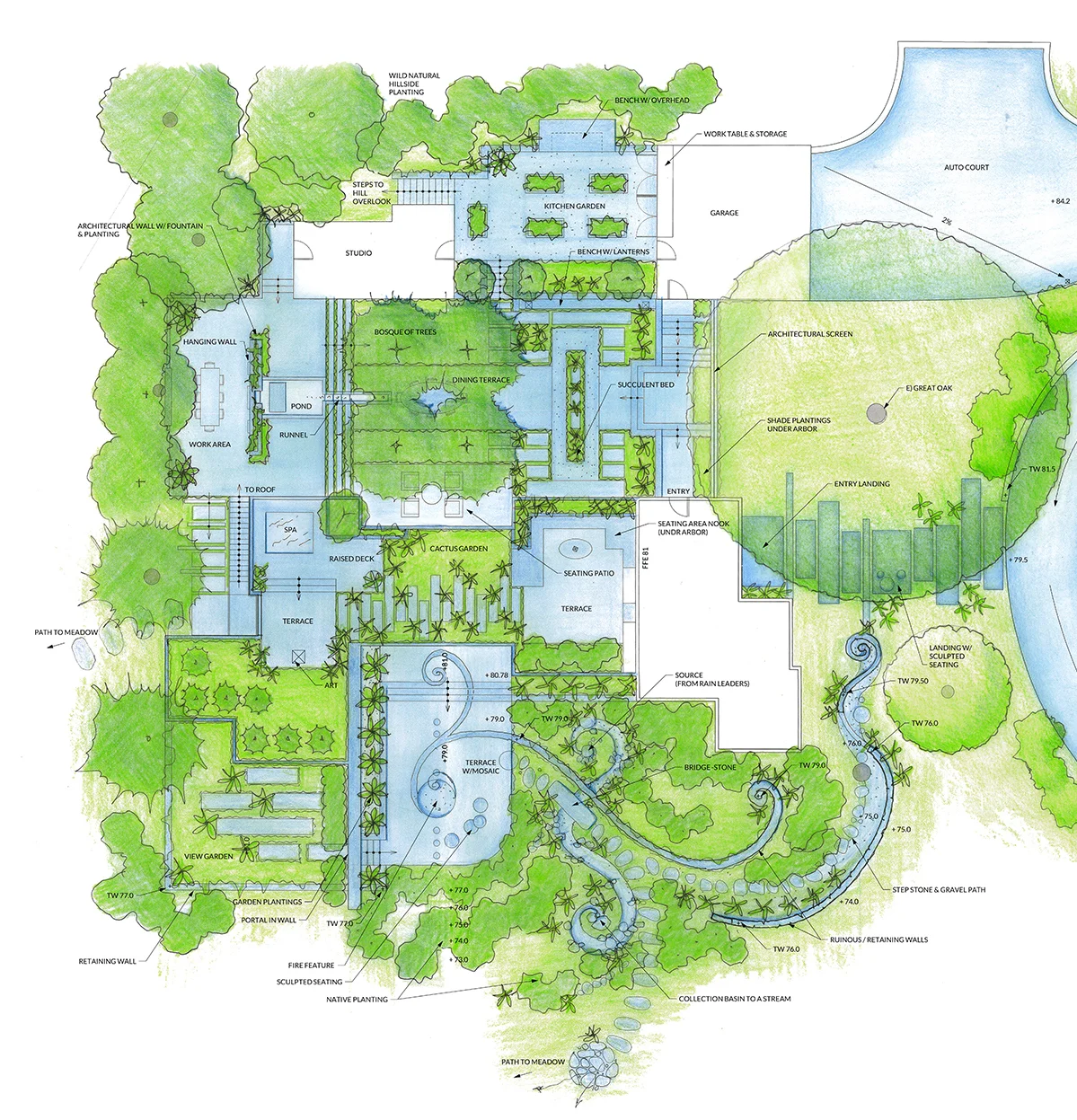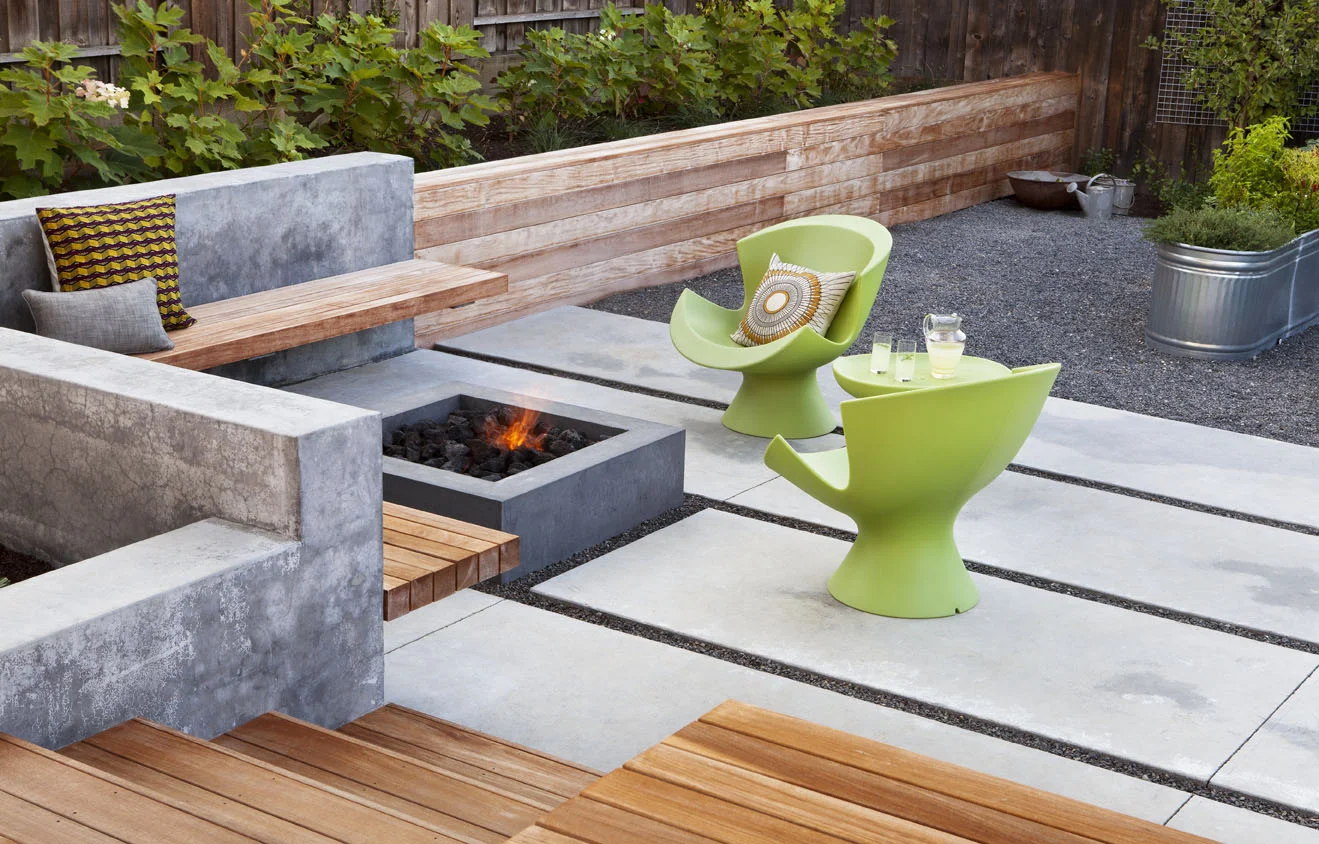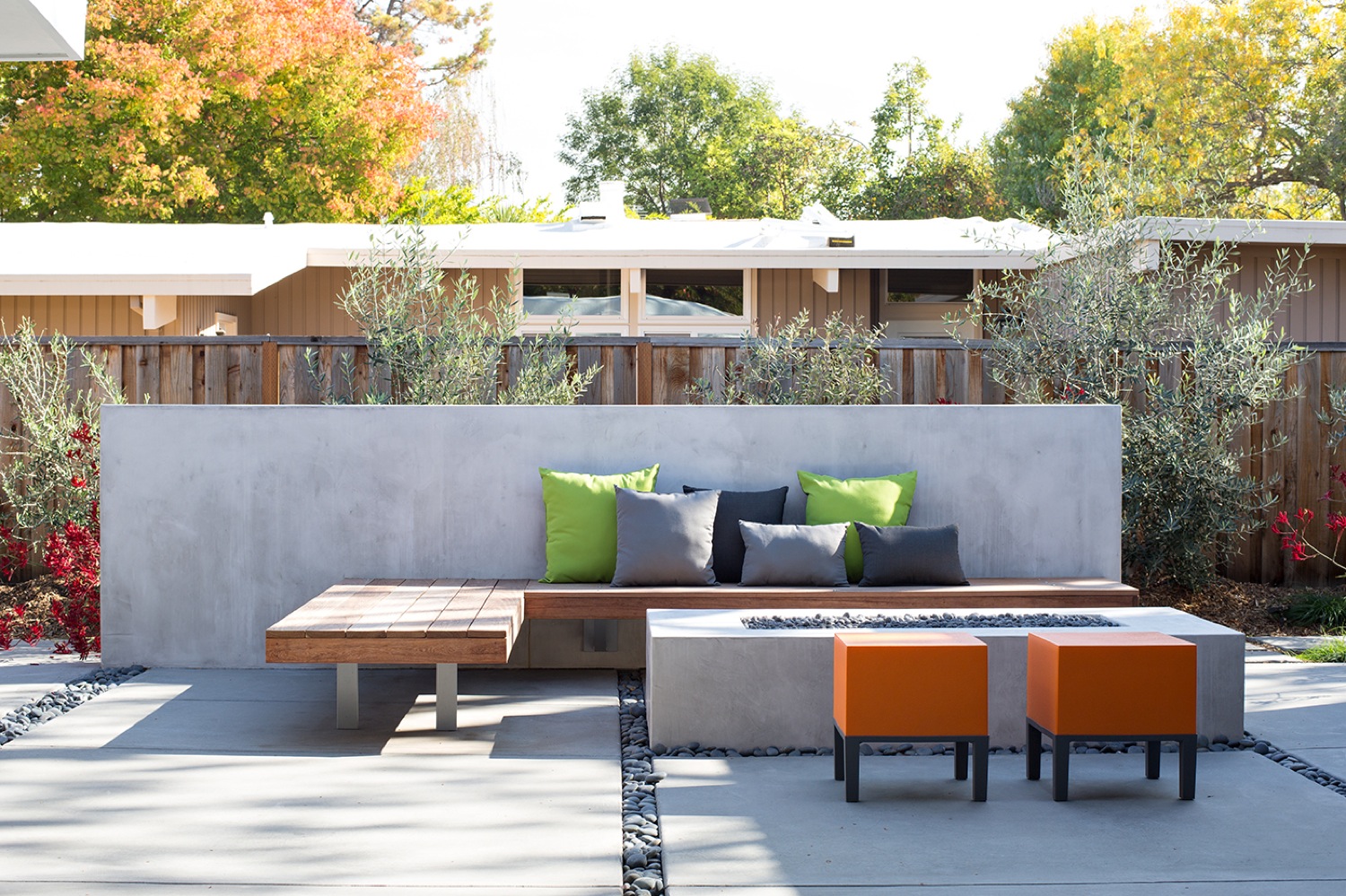Garden Geometries: Rectangular Forms
By Vera Gates
At Arterra we frequently design with rectangular forms, inspired by the golden rectangle and the desire to create harmonious proportions. This geometric form is infinitely workable and easily repeated in endlessly interesting patterns. Our clients are drawn towards rectilinear designs, as they feel calm, quiet and Zen-like. It is a familiar, visually comprehensible form, which makes it soothing.
The idea here is that the perfectly proportioned rectangle will be infinitely pleasing to the human eye.
We are big fans of the humble rectangle and we use it a lot, both horizontally as a plane and vertically as a shape and form.
A series of rectangles can be stacked, offset, shifted and rotated. They can be rendered in varying materials of vary sizes. This is an infinitely workable form and easily reinforced with pre-fabricated elements like planters.
In garden design today, the rectangle appears to be having its moment. It is by far the most popular geometric form requested and for good reason. Our contemporary design lexicon emanates from computer drawings, and rectangles are easy to draw, replicate and repeat on the computer. It is readily available in many materials, and it is easy to build straight, rectangular shapes.
However, the rectangle does not necessarily play well with others. The curving forms, in particular seem to have fallen out of favor, because they tend to not work well with the rectangle. Occasionally we merge the two, and the results are powerful.
In a primarily rectilinear design, the challenge is creating complexity and design interest with such a simple shape.
We respond by manipulating the form in scale and dimension, lifting it up at times and replicating it at varying sizes, to create a sophisticated composition of forms.







